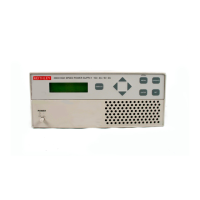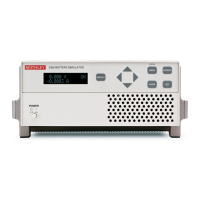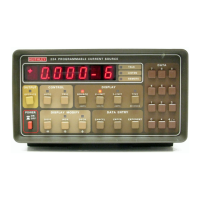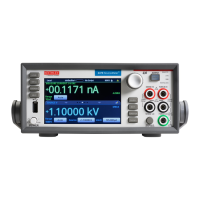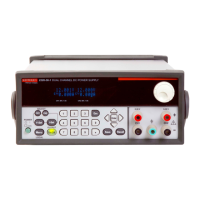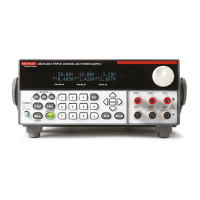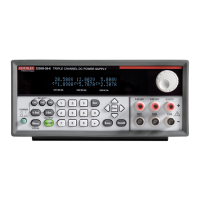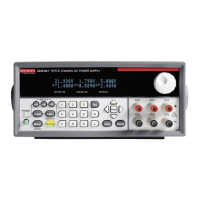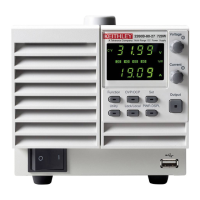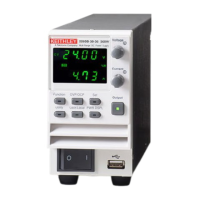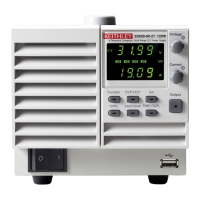8-14 Status Structure
Measurement event status
The used bits of the measurement event register (shown in Figure 8-6) are described as
follows:
• Bit B3, r
eading overflow #1 (ROF1) — Set bit indicates that the battery channel’s (#1)
reading exceeds the measurement range of the instrument. (Battery channel only — for
the charger channel, see Bit 6.)
• Bit B4, pulse trigger
timeout #1 (PTT1) — Set bit indicates that a battery channel (#1)
current pulse has not been detected. This bit applies to pulse current and long integration
functionality. (Battery channel only — for the charger channel, see Bit 7.)
• Bit B5,
reading available #1 (RAV1) — Set bit indicates that a battery channel (#1)
reading was taken and processed. (Battery channel only — for the charger channel, see
Bit 8.)
• Bit B6,
reading overflow #2 (ROF2) — Set bit indicates that the charger channel’s (#2)
reading exceeds the measurement range of the instrument. (Charger channel only — for
the battery channel, see Bit 3.)
• Bit B7, pulse trigger
timeout #2 (PTT2) — Set bit indicates that a charger channel (#2)
current pulse has not been detected. This bit applies to pulse current and long integration
functionality. (Charger channel only — for the battery channel, see Bit 4.)
• Bit B8,
reading available #2 (RAV2) — Set bit indicates that a charger channel (#2)
reading was taken and processed. (Charger channel only — for the battery channel, see
Bit 5.)
• Bit B9, buffer full #1 (BF1) — Set
bit indicates that the specified number of battery
channel’s (#1) readings (average count) have been taken. (Battery channel only — for the
charger channel, see Bit 10.)
• Bit
B10, buffer full #2 (BF2) — Set bit indicates that the specified number of charger
channel’s (#2) readings (average count) have been taken. (Charger channel only — for
the battery channel, see Bit 9.)
Test Equipment Depot - 800.517.8431 - 99 Washington Street Melrose, MA 02176
TestEquipmentDepot.com
